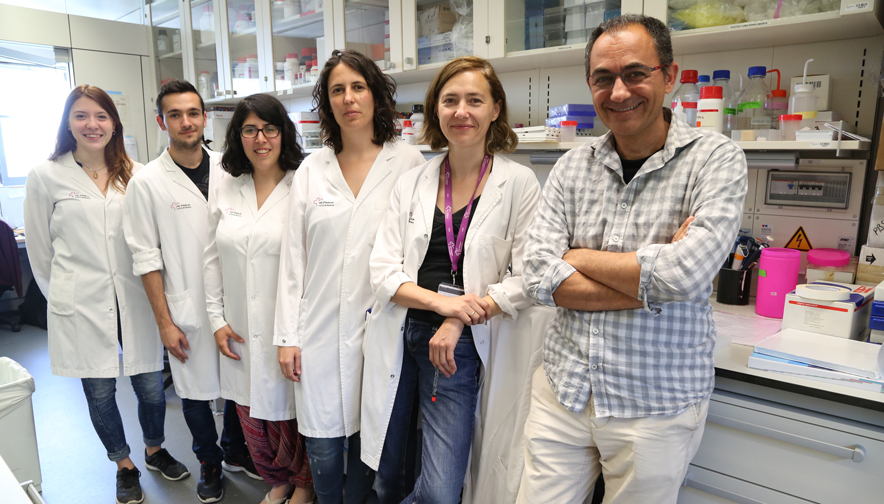Nanomedicine versus free drug: greater efficiency and less toxicity
The EU-NCL network will finance a project of nanomedicine for prostate cancer cordinated by Simó Schwartz and Ibane Abasolo, NANBIOSIS-U20 Director and Coordinator.
The European Nanomedicine Characterisation Laboratory (EU-NCL) has selected a project from VHIR intended to develop a therapeutic nanoconjugate that improves the treatment of prostate cancer. Among all proposals presented to EU-NCL, only this one in Spain is part of a small group chosen to carry out the necessary tests to move the product into clinical practice, which makes Vall d’Hebron Campus a leading nanomedicine hospital with capacity to generate and validate therapeutic nanoconjugates and nanomedicines.
The main difficulty in this field is to have a nanomedicine that meets certain requirements that can make it susceptible to reach clinical trials. “In our case, pre-clinical trials will be made with a polymer that transports therapeutic paclitaxel, a drug for the treatment of breast cancer, pancreas and prostate, which has proven to be a good candidate to reach clinical phases. Nanbiosis helps us in the efficacy/toxicity part in vivo” says Dr. Simó Schwartz Jr.
What has been seen so far is that this therapeutic nanoconjugate is able to carry much more paclitaxel into the tumour whereas its toxicity profiles are much lower as compared to the free drug used in clinical practice.
In animal models of prostate cancer our nanoconjugate is able to avoid the growth of the tumor while deeply reducing metastasis. It has managed to change the average half-life and pharmacokinetics of the drug and to reduce its toxicity.
As a comparison, when given in animals the same amount of free drug, without the nanomedicine, at the second dose, toxicity is so high that trials have to stop. That is to say, that “the difference in toxicity between the therapeutic nanoconjugate and the free drug is abysmal which allows us to make much more aggressive administration regims, that are not feasible with the conventional drug,” insists Dr. Schwartz Jr.
The next step will be to determine which is the maximum dose of administration that we can use. At the moment, we know that when administered three times a week during 4 weeks no toxicity is seen and the therapeutic efficacy is very good. We need to see if this dose regim can be increased to get even more efficacy, as long as toxicity allows it.
“We work with a nanomedicine that is easily scalable, very stable, it can be lyophilisated (reconstituted) very easily and after two years of storage is still in perfect condition,” he highlights. Therefore, for the next year “our goal is that the nanoconjugate may be authorized as an Investigational New Drug (IND) and hence all essays that we have agreed with the EU-NCL are those that the European Medicines Agency (EMA) consider necessary to achieve the IND designation”, concludes.









